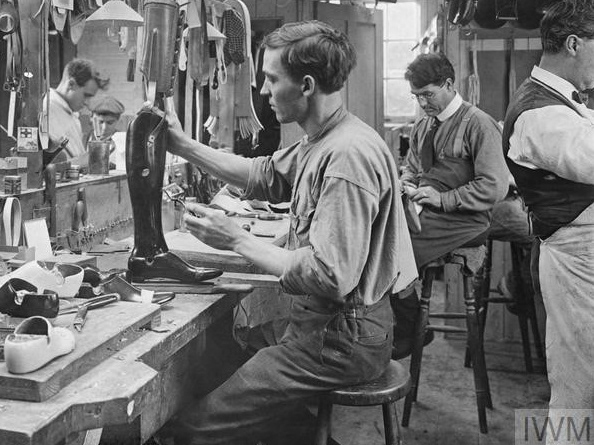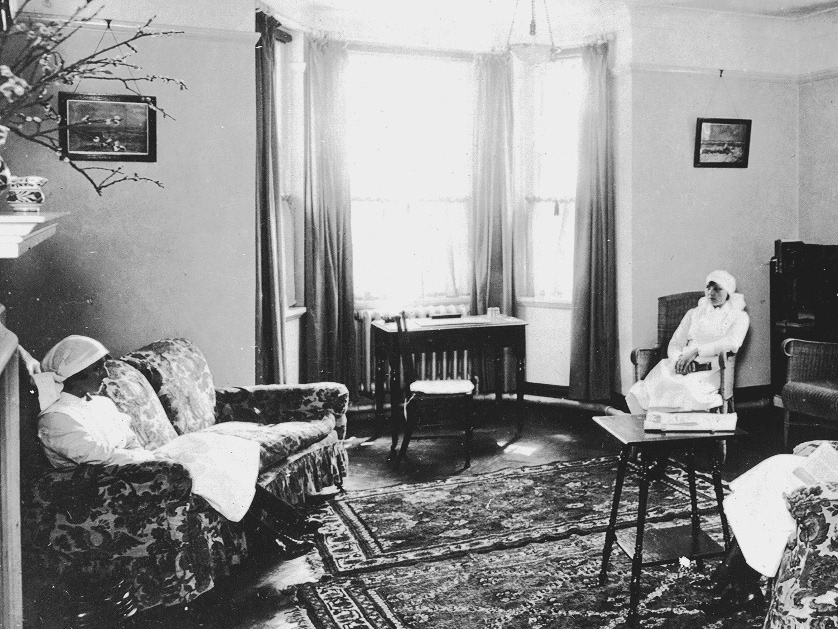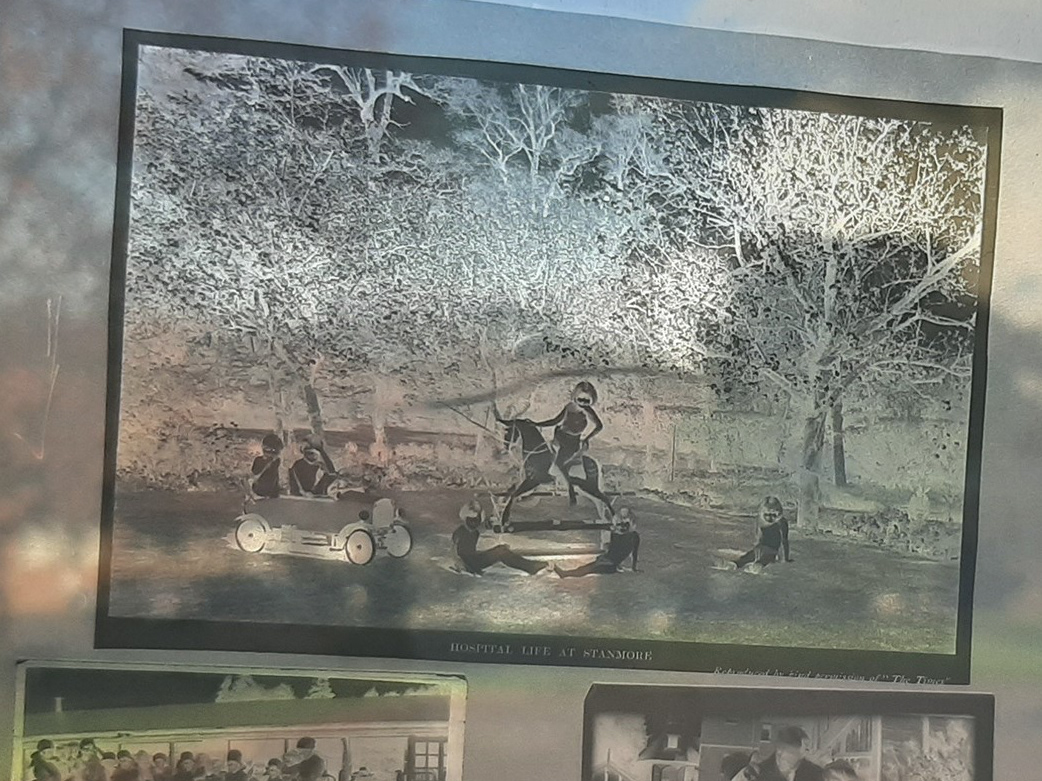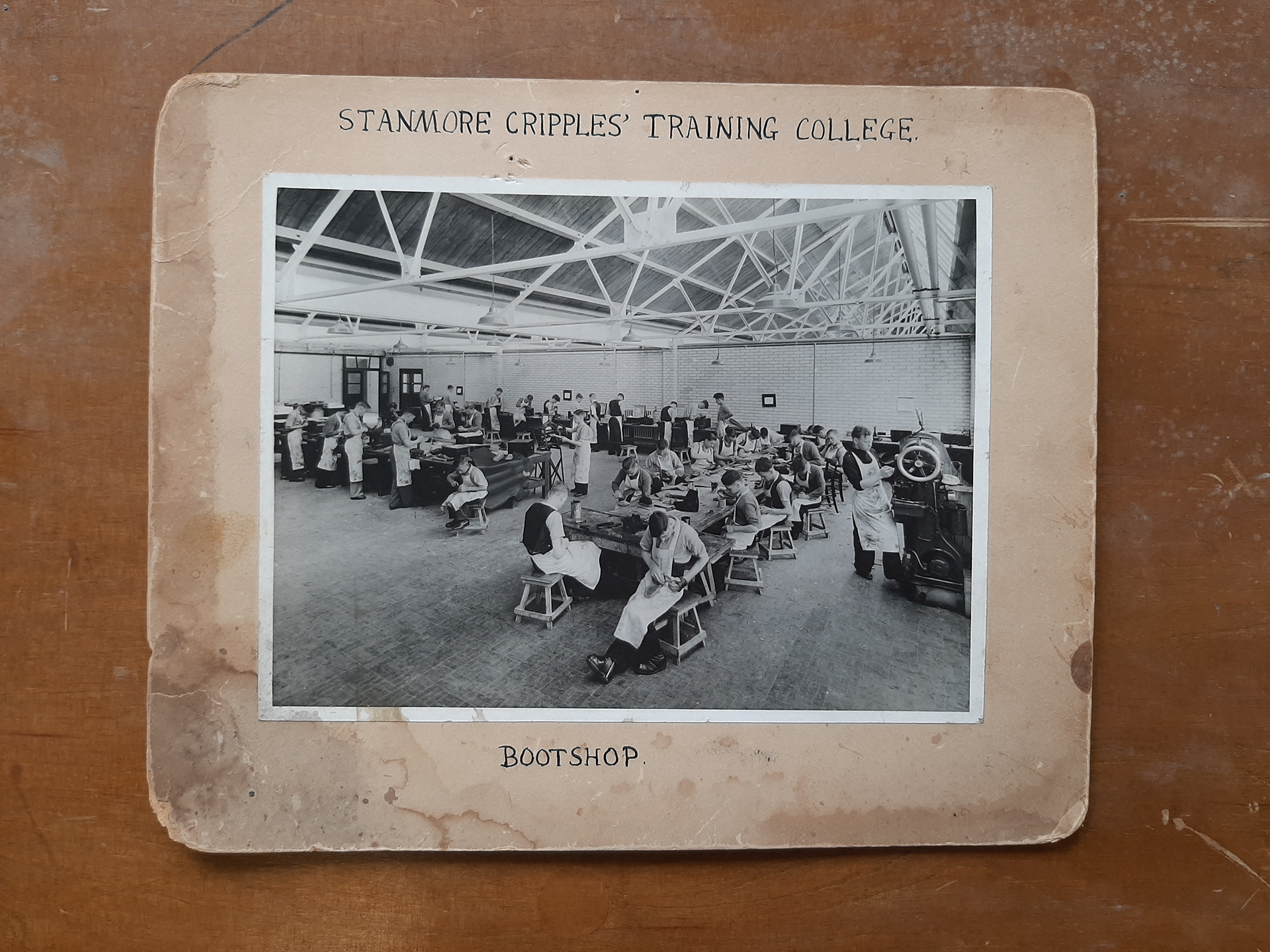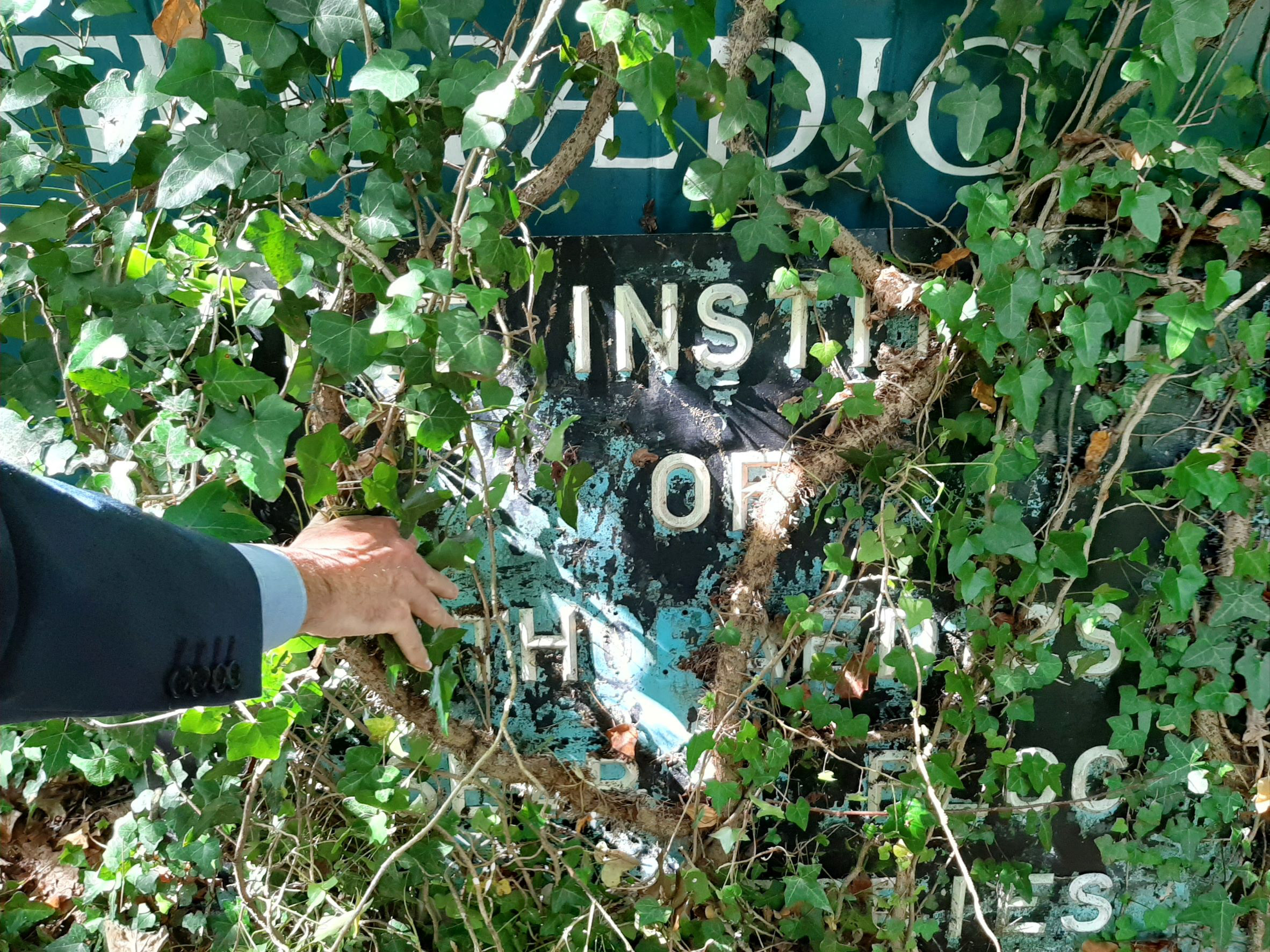Then and Now / Nicola Lane / 2019
"The future is a door, the past is the key."
Victor Hugo, 1802-1885
This is the story of our search for the 'Grey Lady'.
In June 2019 Pegleg Productions started to work with participants to identify, film and document memories, artefacts and archives relating to the founding and evolution of the RNOH Stanmore; from the establishment of Mary Wardell's Convalescent Home for Scarlet Fever in 1883, through financial crisis and the First World War to Mary Wardell's death in 1917 and the sale of the hospital to form the RNOH 'Country Branch' in 1922.
When we first began our search, the only clue to the hospital site and the First World War was a 1914 photograph showing nurses and wounded Belgian soldiers posed outside what is now Eastgate House, the building that once housed the 'Mary Wardell Convalescent Home for Scarlet Fever' and now housing the admin offices of the RNOH. In the image above, RNOH Head of Comms Tony Higgins demonstrates where the 1914 photo was taken.
Nurses and Belgian soldiers /1914 / Courtesy RNOH
In the centre of the group is a blackboard, and we can decipher "...souvenir de notre séjour a l'Hospital Mary Wardell à Stanmore Angleterre.." and "Guerre Européenne 1914": translated as "...a memory of our stay at the Mary Wardell Hospital...European War 1914." Then "Les Inséparables Carabinieres" - the "Inseparable Riflemen", followed by the signatures of the men - which are difficult to decipher.
Detail / Photograph Courtesy RNOH
Is Mary Wardell the ‘Grey Lady’? It has been suggested that she is the woman standing in the centre of the 1914 photograph. But Mary Wardell died in 1917 aged 84, and the woman in the photograph is clearly not in her eighties. Perhaps she is the Hospital Matron?
Pictured below is Tony Higgins with Derek Sayers' excellent 2015 publication, "A Pictorial History of the Royal National Orthopaedic Hospital", in which the 1914 photograph appears:
Nicola Lane / 2019
So who is Mary Wardell? Gradually a few facts began to emerge from British Library newspaper archives and online Medical archives. She has private means, she works with the London poor, and lives with her older sister Margaret in Belsize Park.
In the early 1880s she begins her 'Great Work' - to establish a convalescent home for Scarlet Fever in response to the epidemics of infectious diseases that ravage the population, which she witnesses during her philanthropic work in the East End of London. She is supported in this by Mrs. Gladstone, wife of the Prime Minister, and by many eminent medical men.
in 1883 she purchases the Stanmore site to establish 'The Mary Wardell Convalescent Home for Scarlet Fever'. Her important supporters form a Committee and one of the most important is Sir Joseph Fayrer, pictured below. He gives the address at the opening of the Convalescent Home by the Prince and Princess of Wales in 1884, and Mary Wardell names all the rooms in the Home after members of her Committee.
Sir Joseph Fayrer / Courtesy Wellcome Library, London.
Out of all the eminent Committee members, Sir Joseph is particularly emblematic of Britain's Medical profession and the British Empire in the late Nineteenth Century. He spends over 45 years in the Indian Medical Service, and becomes an expert on snake venom and cholera epidemics. In 1885 he represents the Indian Government at the fourth International Conference on Cholera, a fore-runner of the World Health Organization. He has Royal Patronage, which also helps Mary Wardell's cause.
There are many photographs and portraits of these eminent men, but as yet no photograph of Mary Wardell has been discovered. Perhaps she is present in this early photo of Eastgate House, in a blurry little group outside on a sunny day:
Early Photograph of Eastgate House / Courtesy Derek Sayers
Articles, letters to newspapers, appeals and fundraising events document in great detail Mary Wardell pulling every string she can, as she struggles to pay off the Convalescent Home debts and keep donations coming in. In 1891 she receives substantial funding enabling her to build an annexe to the Convalescent Home. She moves from her house in Belsize to the Home, and commemorates this in a terracotta plaque with her initials MW and the date 1891:
Eastgate House 2019 / Nicola Lane
At some point, probably due to ill health, she moves to Ramsgate and dies there in 1917. In her Will she asks to be buried in St Lawrence's Church, Little Stanmore, and requests that no special fuss be made...
On a boiling hot day in 2019 Project Leader Nicola Lane searched for Mary Wardell's grave in the churchyard of St Lawrence's, but could not find it. It seemed that Mary Wardell was determined to remain invisible...
St. Lawrence's Church, Little Stanmore / Nicola Lane / 2019
After the arrival of COVID 19 in early 2020 and subsequent funding from the Culture Recovery Fund, Pegleg Productions recruited Consultant Archivist Dr Milnes-Smith, who has discovered important new archives.The location of her grave in St Lawrence's has now been confirmed by RNOH Chaplain Father Paul Reece - and thanks to Dr Milnes-Smith, Mary Wardell has her Wikipedia entry:
Mary Wardell's grave, St Lawrence's churchyard, Canon's Park / Nicola Lane 2019
Mary Wardell's selection of the site for her Convalescent Home on Brockley Hill is an enduring legacy - a landscape that she chose in 1883 for its isolation and "beautiful and breezy situation" - much loved by patients and all who work at the hospital:
The Great Tree outside Orthotics / Roxaneh Zarnegar / 2020
LISTEN to the fascinating story of the founding of Mary Wardell's Convalescent Home for Scarlet Fever, her struggle with its financial challenges, and her celebration of Queen Victoria's Silver Jubilee - discovered in contemporary accounts sourced from archives and performed by RNOH staff, clinicians, patients, and volunteers:
*
For the next chapter in 'Our Search for the Grey Lady' go to:
*

